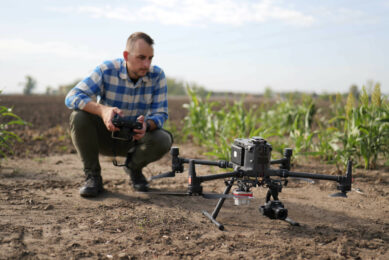Hokkaido University creates this autonomous tractor swarm

A ‘swarm’ of robotised tractors has been created at Hokkaido University in Japan as part of a project aimed at reducing the country’s reliance on an ageing and declining farm labour force.
According to Professor Shin Noguchi of the Agricultural Research Institute, Hokkaido University Graduate School, having small tractors converted to unmanned operation with technology for coordinated movement is a more realistic option for Japan’s farmers than buying larger, higher output tractors.
“If we attempt to increase the size of tractors used, farmers will have to replace all their working machinery as well, which would be very expensive,” he points out.
Prof Noguchi believes that working the 4 Yanmar tractors as a coordinated group to perform simulated field cultivation is an industry first. In this instance, the operator stood clear of the machines and activated the group using a tablet computer but for practical reasons, Prof Noguchi envisages that at least 1 tractor in a swarm will be manned.
That will ensure someone is on hand to deal with simple breakdowns such as a broken cultivator tine and other issues but the increase in manpower productivity over at 1 man, 1 tractor approach would still be considerable.
And where the tractors can be left to their own devices, working through the night would add to the productivity gain.
Autonomous tractors
The individual tractors’ guidance systems are linked for group working so they duplicate the lead tractor’s path but offset by the working width of any implement.
Watch this video: Japanese firms in race to develop driverless tractors
“The most difficult technique when working in a group is to make the tractors turn without colliding,” says Prof Noguchi. “At present, if a seamless turn is judged to be difficult, the tractors must stop and turn in sequence, which results in downtime; this is one of our current areas of focus.”
With sufficiently accurate GNSS guidance, it should be feasible to achieve the same end result with the tractors working in the same field but apart.
Join 17,000+ subscribers
Subscribe to our newsletter to stay updated about all the need-to-know content in the agricultural sector, two times a week.



